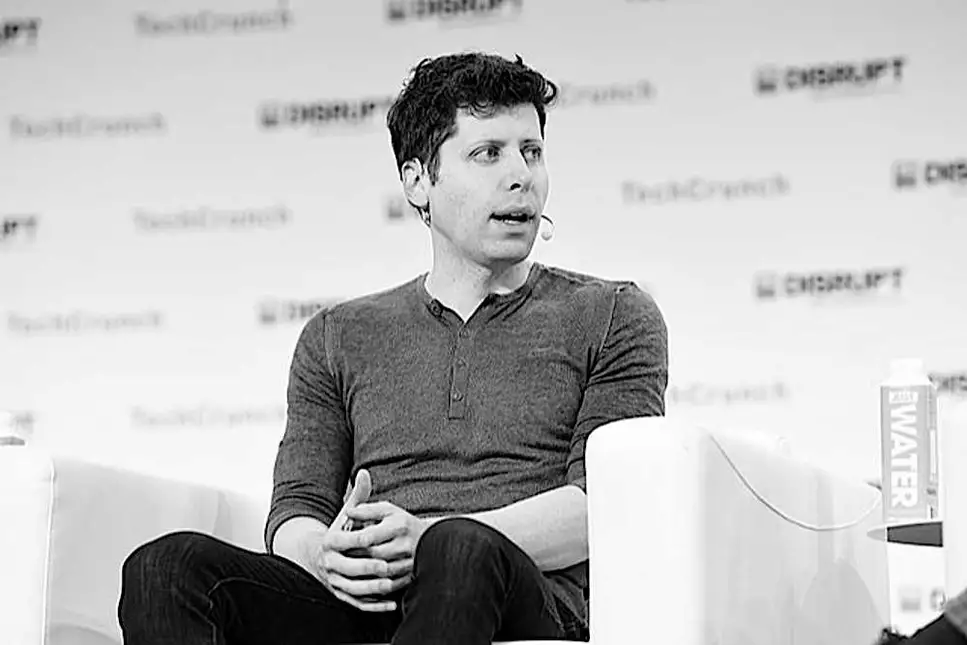For subscribers
Loneliness and social isolation: A public health threat for societies
https://www.straitstimes.com/opinion/loneliness-and-social-isolation-a-public-health-threat-for-societies
=====
This is the eleventh of a series of 12 primers on current affairs and issues in the news, and what they mean for Singapore.
=====
SINGAPORE – A 20-something Gen Zer who laughs with colleagues, meets friends for drinks and sees family for dinner every weekend may seem to have a rich network of interpersonal connections.
In reality, he may be lonelier than his widowed grandmother alone at home with only a domestic helper except when relatives visit on some Sundays.
Though they are similar, loneliness and social isolation are not always related. Loneliness is a subject sense of distress that occurs when a person perceives that their need for meaningful connections is unmet, even if they are surrounded by people.
While social isolation – and loneliness – has been building up for decades as family and community structures change, governments are increasingly recognising it now as a crisis.
In November 2023, the World Health Organisation (WHO) declared loneliness as a pressing global health threat.
The same year, United States surgeon-general Vivek Murthy issued an 82-page public health advisory titled Our Epidemic Of Loneliness And Isolation.
The surgeon-general said that far more than a bad feeling, loneliness and social isolation are detrimental to individual and societal health. They increase the risk of premature death by 26 per cent and 29 per cent respectively, he said.
Dr Murthy warned: “The mortality impact of being socially disconnected is similar to that caused by smoking up to 15 cigarettes a day, and even greater than that associated with obesity and physical inactivity.”
Singapore, too, is concerned about the health impact of social isolation, particularly among elderly people.
It has earmarked $800 million for improving active ageing centres supporting seniors in their communities. At the launch of Age Well SG in November 2023, Health Minister Ong Ye Kung said: “For many seniors, their biggest enemy is social isolation and loneliness. That’s when your health really deteriorates. We want them to be socially connected.”
Researchers in Singapore say that seniors who live with their children and grandchildren can feel as lonely as someone living alone, if they are ignored by their loved ones going about their own busy lives.
Data collected from the Singapore Chinese Health Study, which recruited participants between April 1993 and December 1998, found almost four in five elderly people who are socially isolated lived with their families, compared with the three in 20 living on their own.
Young people feel lonely even with social media connections
While the stereotype is that an older person with dwindling social connections is at the greatest risk of loneliness, multiple studies show that it is in fact younger people who are more likely to feel socially isolated.
According to a Gallup poll of more than 140,000 people in 2023, 27 per cent of young adults aged 19 to 29 reported feeling very or fairly lonely, compared with 17 per cent of older adults aged 65 and older.
The 2023 Gallup poll of 142 countries also found that nearly one in four people in the world feels fairly or very lonely, and that rates are about even between men and women.
A 2020 report by insurance giant Cigna based on a questionnaire answered by more than 10,400 people found that 79 per cent of Gen Zers (born between the late 1990s and early 2010s) and 71 per cent of millennials (born between 1981 and 1996) considered themselves lonely, compared with 50 per cent of baby boomers, who are now aged 60 to their late 70s.
In Singapore, a 2023 survey by the Institute of Policy Studies (IPS) had similar findings.
The straw poll, carried out between November and December 2023, surveyed 2,356 Singaporeans and permanent residents aged 21 to 64. It found that people between the ages of 21 and 34 had the highest mean score for loneliness.
In contrast, people between 51 and 64 had the lowest mean score for loneliness.
It is not surprising that young people should experience feelings of abandonment and lack of support, said psychologists. Young adults are at a transitional stage of their lives, navigating uncertainties in finding partners, establishing their careers and carving out an existence for themselves apart from their parents.
Social media too often provides connections that are only fleeting and superficial.
Dr Olivia Remes, a mental health researcher at the University of Cambridge, told CNN humans need social connections to thrive, “and being embedded in strong supportive networks can protect our well-being when we’re faced with difficulties in life”.
She said social media can do more harm than good, especially when users are stuck in “passive scrolling”.
It can heighten feelings of loneliness to compare one’s own life with the seemingly rosy lives of others, said Dr Remes, though engaging more on social media can also come with the risk of opening one to negative feedback and ostracism.
In fact, fingers have been pointed at social media as a culprit for why loneliness is higher in teens and young people.
Research shows that feelings of isolation are more common among heavy social media users, said Dr Murthy.
A 2023 study led by Professor Tore Bonsaksen from the Inland Norway University of Applied Sciences, also found that the more time spent on social media, the higher the levels of loneliness, especially if social media was the main source of relationships for users.
While social media may facilitate social contact to a degree, they may not facilitate the type of contact necessary for meaningful relationships, said Prof Bonsaksen.
This was borne out during the Covid-19 pandemic, when online interactions spiked across all platforms, and feelings of isolation increased at the same time.
A 2020 Harvard study on loneliness found that slightly over two in five young adults (43 per cent) reported increases in loneliness following the outbreak of the pandemic. About half reported that no one in the past few weeks had “taken more than just a few minutes” to ask how they were doing in a way that made them feel like the person “genuinely cared”.
Dr Chew Han Ei, an adjunct senior research fellow at IPS, said a reason that higher levels of loneliness were reported during the pandemic could have been that young people missed out on many social opportunities they would normally have had.
He said: “They don’t go for orientations, they don’t go for their immersion programmes overseas, and there are no water-cooler conversations at the workplace or physical orientations where they go around to meet people.”
One German review of 34 studies from four continents found a 5 per cent increase in the prevalence of loneliness during the pandemic. The researchers said more research was needed on the long-term impact of the pandemic on feelings of social isolation.
Communities’ bulwark against loneliness
Research shows the experience of loneliness across the lifespan follows a U-shaped curve – high during the turbulent adolescent years, decreasing somewhat during middle adulthood when families and social networks are established and solidified, and then increasing again in old age.
Social isolation does not just hurt individuals.
The US surgeon-general says communities with higher levels of social connection typically have better health outcomes than communities with lower levels of social connection.
One study using data from 39 states found that a 10 per cent increase in the proportion of residents who felt that other people could be trusted was associated with an 8 per cent decrease in overall mortality.
Communities with high levels of social connection are more likely to adopt health-protective behaviour, like complying with vaccination regimes. They are more resilient against natural disasters, have lower levels of violence, and experience higher economic growth.
In his advisory, Dr Murthy outlined a national strategy for tackling this “epidemic of loneliness” that includes designing neighbourhoods and creating social infrastructure to promote connectedness, developing pro-connection policies at the governmental level, mobilising the healthcare sector to identify, treat and support vulnerable individuals, funding research on the subject, and cultivating a culture of respect and kindness in the community.
The US’ Suicide Prevention Resource Centre says: “Positive and supportive social relationships and community connections can help buffer the effects of risk factors in people’s lives.”
It advises a whole of society approach towards battling loneliness, in which teachers and counsellors, community organisations such as clubs and faith-based organisations, and peer-led groups create opportunities for meaningful and sustaining connections and relationships to be formed.
The importance of social connections is also being emphasised in Singapore’s preventive health programme, Healthier SG, its key health strategy for the coming years.
Healthier SG aims to increase the years of good health for Singaporeans by helping them make good choices regarding nutrition, habits, exercise and mental well-being. Each person will have a care plan drawn up by a primary care doctor, with whom they will maintain a long-term relationship.
In these care plans, doctors will also have to make “social prescriptions”.
In a speech in 2022, Minister-in-charge of Social Services Integration and Minister for National Development Desmond Lee said social prescription plays a key role in sustaining good health.
He said: “Social prescribing complements healthcare in institutional settings by connecting residents to local, non-clinical social programmes such as group exercise programmes, community gardening or smoking cessation programmes.
“This helps them lead a healthier lifestyle and benefit from stronger community support and addresses social issues early on before they lead to worsening health.”
There is no magic pill one can take as a treatment for loneliness or shortcut to dispelling feelings of isolation. It takes being intentional in building social connections in one’s life.
Psychologists advise people to be open to making friends at any age, be engaged in their neighbourhoods, be active by joining a club like a book club or exercise group, and, yes, spend less time on social media.
Struggling with loneliness does not mean that someone is broken or that there is something fundamentally wrong with them because they cannot cope with what life throws at them, said Dr Murthy.
“We can’t take on a lot of these challenges alone. We need to be together. We need to be connected,” he said. “That’s what strengthening the social fabric in our lives and communities is all about.”
The Singapore Perspective
Contrary to what many people believe, loneliness and being isolated from the community are not a normal part of ageing.
Yet, they are what many older people experience.
While the World Health Organisation (WHO) said in 2021 that social isolation affects around one in four older adults worldwide, this number is higher in Singapore.
A 2015 study by Duke-NUS Medical School’s Centre for Ageing Research and Education found two in five Singaporeans aged 62 years and older to be lonely.
A more recent study from 2021 that used data from the large-scale, long-running Singapore Chinese Health Study also found that older Chinese adults today are at higher risk of social disconnection than before.
This is because family sizes have shrunk, reducing the number of people seniors can turn to for support. And as they become more frail, their social relationships also become more limited.
The feeling of isolation was worsened by the Covid-19 pandemic, which reduced social interactions even further among the elderly.
By 2030, more than 900,000 Singaporeans will be aged 65 and above, and many will face loneliness if more is not done now.
While loneliness represents a person’s perception of feeling isolated, social isolation or disconnection refers to the lack of social, emotional and physical engagement with other people.
In her study with Associate Professor Feng Qiushi from the Department of Sociology and Anthropology at the National University of Singapore, Professor Koh Woon Puay found that the most socially disconnected individuals actually live with family members.
Using data from her long-term Singapore Chinese Health Study of a cohort of 63,257 middle-aged and elderly Chinese Singaporeans, Prof Koh found almost four in five elderly people who are socially isolated lived with their families, compared with the three in 20 living on their own.
Among those living alone, men were about twice more likely to be disconnected than women.
Their traditional role as wage earners results in men having smaller social networks and fewer social interactions than women, the study said. The transition from employment to retirement further curtails their social networks, worsening the disconnect.
To help seniors keep active, access better care options and live more independently in the community, the Singapore Government is pumping a total of $3.5 billion into initiatives for a new programme called Age Well SG, over the next 10 years.
Age Well SG focuses on preventive care through measures that keep seniors active and social, allowing them to go about their daily activities with greater ease.
One goal is for four in five seniors to have access to active ageing centres near their homes, by 2025. These activities include communal meals and exercise programmes.
To achieve this, volunteers will reach out to seniors near each centre, especially those who live alone.
More senior care centres, which provide custodial day care and rehabilitation services, will be built, alongside more home care options for those who need more help.
The Government aims to improve care coordination by having one provider coordinate a bundle of key services in each region to ensure seniors have a single touchpoint for their care needs.
In addition, “silver upgrades” to residential estates will provide amenities such as therapeutic gardens, barrier-free ramps and senior-friendly home fittings such as wider toilet entrances and shower seats.
Commuter infrastructure will also be improved, including building more sheltered linkways and senior-friendly bus stops and roads.
About The Straits Times-Ministry of Education News Outreach Programme
For 12 Mondays between March 18 and Aug 5, this paper’s journalists will examine different contemporary topics in the Opinion section. The primers broach subjects as wide-ranging as trust in the digital age, the future of transport, and the modern definition of success. Each primer includes a local perspective to help students draw links to the issues’ implications for Singapore. The primer articles are part of The Straits Times-Ministry of Education News Outreach Programme, which aims to promote an understanding of local and global issues among pre-university students.
































